Hierarchical Resource Management for Mega-LEO Satellite Constellation
Abstract
1. Introduction
- To design and propose a resource management architecture, strategies, approaches, and algorithms, the influencing factors for resource scheduling and usage are presented first. This understanding serves as the basis for subsequent proposals aimed at enhancing resource management in satellite communication networks.
- We study and design a hierarchical resource management architecture (at the NCC, SBSs, and user terminals, respectively) according to resource distribution and application requirements at different levels, so that resource scheduling is more flexible, efficient, and real-time compared with unified implementation in the whole network.
- As part of our research, the functions and procedures of each component will be analyzed and depicted in detail.
- In this paper, we present the approaches and algorithms associated with the main components, functions, and procedures of our proposed system. These methodologies aim to enhance efficiency and effectiveness in resource management. For spectrum planning at the NCC, spectrum data mining methods based on causal regression, LSTM prediction, and anomaly detection are presented, and spectrum planning based on game theory, anomaly algorithms, machine learning, and knowledge graphs is summarized. Service area planning needs to comprehensively consider multiple parameters, which can be obtained by multiple algorithms, such as satellite coverage area calculation, interference avoidance calculation, and residual time calculation, etc. Then, a heuristic beam scheduling algorithm is studied for beam-hopping satellite systems.
- In this study, we provide an assessment of effectiveness and efficiency, along with the primary performance indicators. These metrics are essential for evaluating the overall performance of our proposed system. We conduct some simulations to validate the effectiveness and efficiency of our architecture, approaches, and algorithms.
2. Related Works
3. Analysis of Resource Management in the MLSCS
3.1. Influencing Factors Associated with Resource Management in the MLSCS
- Regionality of spectrum usage policy. The available spectrum is different in different countries and regions. Therefore, the available spectrum also changes dynamically with the movement of SBSs.
- Interference from open space. The electromagnetic environment in space is complex and rigorous, and there are various types of intentional and unintentional interference to SBSs and user terminals. In particular, the interference of terrestrial base stations introduced by the application of 5G extended frequency bands has an effect on the resource scheduling of the MLSCS.
- Protection of GEO satellite spectra by the ITU (International Telecommunication Union). The MLSCS requires multi-satellite collaborative coverage to avoid interference from GEO satellites, especially in mid- and low-latitude areas.
- Intra-system interference. For Walker satellite constellations, intra-system interference introduced by the aggregation of satellites in the north/south pole areas needs to be optimized and controlled.
- Transmission capacity of SBSs. Generally, the capacity of a single satellite is limited, so for hotspot areas that need enhanced and urgent services, such as earthquake relief, the regional service volume can increase dramatically in a short time, and it is necessary to allocate more resources to meet users’ demand in a collaborative way. Hence, multi-satellite emergency resource scheduling is required.
- Onboard processing capability. Due to the limited caching and computing capacity of satellites, it is difficult to realize complex resource scheduling algorithms and massive data exchanges, especially for cross-regional resource scheduling planning, which needs careful consideration.
3.2. Primary Challenges in Resource Management
- Stable topology: The movement of all satellites in the constellation is similar, with minimal variation in perturbation and mutual position. This results in a stable constellation shape, which facilitates system control, management, and routing.
- Near-circular orbit: The Walker constellation adopts a near-circular orbit, where the angular velocity of satellite motion is nearly constant. This characteristic is beneficial for achieving global uniform coverage.
3.2.1. Non-Uniform Distribution of SBSs
3.2.2. Scarce Global Spectrum Resources
3.2.3. Non-Uniform Distribution of Service
3.2.4. Diversified Users and QoS Requirements
3.2.5. Global Optimization Is Very Difficult
4. Hierarchical Resource Management Architecture
- Level 1: To ensure efficient and effective utilization of satellite resources, it is necessary to consider the division of satellite service areas and the available spectrum resource planning. By leveraging these elements, we can guide satellites to carry out multi-satellite service coordination, ensuring that they operate in a complementary and synergistic manner. Furthermore, by establishing a unified global collaborative service system, we can enable seamless communication and data sharing across different satellite networks, promoting a more integrated and efficient satellite communication ecosystem.
- Level 2: To ensure optimal utilization of satellite resources, we allocate them to user terminals based on their specific needs and requirements. This allocation process involves guiding user terminals to access SBSs that are strategically located to provide the best possible coverage and service. Once user terminals are connected to SBSs, data interaction between them is realized through a secure and efficient communication protocol. This protocol ensures that data are transmitted and received in a timely and accurate manner, promoting seamless communication and data sharing across the satellite network.
- Level 3: This level schedules user data for various service types, such as real-time, best-effort, and guaranteed delivery services. Subsequently, we will optimize the transmission of these data through advanced scheduling algorithms and network protocols to achieve robust QoS guarantees.
- Compared with terrestrial mobile base stations, LEO satellites have distinct characteristics. They move quickly and cover large areas. However, LEO satellites have a very short residence time over any given location, meaning their service area changes rapidly. This leads to frequent changes in the users they can serve.
- Service demands are not uniformly distributed across all areas. In hotspots or emergent situations, it is necessary to implement multi-satellite collaboration to provide enhanced services, such as increased capacity, improved coverage, or larger data rates.
- User handover between beams (the areas of coverage for individual satellite signals) and satellites is not solely determined by signal strength measurements. It also involves multi-satellite resource negotiation, which takes into account various factors such as satellite availability, capacity, and service priorities.
- Dynamic change in the areas covered by LEO satellites makes status data, such as spatial spectrum and service demands, incomplete or non-real-time (NRT), which makes resource optimization and scheduling more difficult.
- Due to their short residence time, SBSs have insufficient cognitive ability regarding propagation circumstances and service situations. Therefore, it is necessary to coordinate multi-satellite cognition to support system resource scheduling.
- The most critical problem is that SBSs have limited resources, including computing, caching, and transmission resources. To achieve optimal system resource scheduling, terrestrial assistance is necessary. However, if NCC pre-schedules all resources, the resulting processing delays and complexity would be too high to meet real-time service demands.
- Radio resource scheduling center (RRSC). It is responsible for system resource scheduling, integrating several functions: (1) It collects network situation information, including details on global telecommunication policies and available resources. (2) Using historical data, it optimizes service area planning and global spectrum scheduling. (3) It schedules SBSs for hotspot and emergent areas to ensure coverage and capacity. (4) It configures the resource scheduling strategy and guides SBSs in scheduling resources efficiently.
- Satellite resource scheduling (SRS). SRS is located at the SBSs and is user-oriented. Taking the configuration of the RRSC as constraints, the beams, slots, spectrum and power (modulation parameters) are scheduled at SBSs, considering user demand and capacity to provide access services for users. At the same time, the downlink data are scheduled to realize the dissemination of user data according to priority.
- User service scheduling (USS). The scheduling of terminal service data occurs at user terminals. Based on their service demands, user terminals submit resource requests to SBSs. The SBSs, in turn, prioritize and manage links and data based on the QoS requirements, which include factors such as latency, bandwidth, and reliability. This management ensures that different service types, such as voice, video, and data, receive the necessary resources to meet their specific demands, thereby achieving resource optimization for user terminals.
5. Detailed Elaboration of Each Layer
5.1. Functions of Radio Resource Scheduling Center
5.2. Functions of Space Base Stations
5.3. Functions of User Terminals
5.3.1. User Access Stratigies and Procedures
5.3.2. Random Access Stratety
6. Approaches and Algorithms
6.1. Global Spectrum Planning
6.1.1. Planning Input
6.1.2. Planning Constraints
6.1.3. Data Mining
6.1.4. Temporal-Spatial Law of Spectrum Usage
6.1.5. Spectrum Planning
6.1.6. Planning Output
- Infrastructure layer. This layer provides computing services, storage services, data transmission, and basic database resources for service and application, while providing physical resource management and scheduling functions.
- General service layer. It realizes the basic operations of spectrum data, such as collection, integration, conversion, and sharing. It also provides unified spectrum data to provide application-oriented general service support.
- Service logic layer. By integrating the service bus with the basic support provided by the general service layer, the system realizes spectrum planning and auxiliary decision-making functions, including radio wave propagation prediction and electromagnetic compatibility analysis.
- Application service layer. Based on the service demands of user terminals at various levels, the network system offers tailored data and computing services. It conducts spectrum planning and sets environmental parameters to ensure optimal performance. Additionally, the system provides a user-friendly interface (UI) for ease of operation and a simulation display interface for visualizing the processes.
6.2. Game-Based Spectrum Planning
6.3. Service Area Planning
- The high-speed movement of SBSs causes their coverage area to change constantly, which, in turn, affects the planning of their service areas.
- The non-uniform distribution of users, changing user traffic, and high-speed movement of dynamic users (such as those on high-speed trains and aircraft) lead to rapid and uneven changes in service distribution. These factors pose significant challenges to the dynamic scheduling of service areas and resources.
- Due to different spectrum usage policies and statuses in various regions, the available spectrum resources for SBSs are also dynamically changing.
- The high-speed movement of SBSs constantly changes the constellation topology and the connection relationships between users/gateways and SBSs. This results in frequent handovers of users/gateways among different SBSs and beams.
- How can we efficiently calculate and dynamically schedule service areas in response to changes in SBSs’ positions and available resources, constellation topology, and user and service distribution? To address this challenge, we need to develop methods or algorithms that can quickly adapt to these dynamic factors and optimize service area planning.
- How can we reduce user handovers among different SBSs and beams while ensuring extended connectivity time for users and reasonable scheduling of service areas and resources? To achieve this, we need to develop methods or algorithms that can optimize the placement and scheduling of SBSs and beams to minimize handovers and maximize user satisfaction.
- How can we ensure real-time and reliable space–ground link connections while minimizing the costs or delays associated with handovers? To address this challenge, we could consider using advanced communication protocols, optimizing network topology, or implementing efficient handover algorithms. These solutions could help ensure that users maintain continuous and reliable connections while minimizing the disruptions, delays, and overheads caused by handovers.
- The SBS must cover the grids in its service area. These grids are small areas divided on the ground based on longitude and latitude, serving as the basic unit for satellite service area planning. The SBS’s service area must be entirely within the coverage area of a larger satellite service provider; otherwise, it cannot meet the communication conditions and provide service to users within the grids.
- Interference avoidance for GEO satellites is crucial. The connections between users and SBSs must be kept away from the geostationary orbit to prevent interference with GEO satellites. If a connection between a grid and an SBS passes too close to the geostationary orbit, grid users must be handed over to adjacent SBSs to maintain communication without interference.
- Ensuring sufficient resources in SBSs is crucial for providing effective and reliable service to users in their service areas. To maintain an essential balance of resource usage among SBSs, it is important to allocate resources in a way that ensures each SBS has a certain margin. When available resources are insufficient, user priority scheduling can be implemented to meet user requirements in batches. This scheduling method allows SBSs to prioritize users based on certain criteria, such as their importance or urgency, and allocate resources accordingly.
- To ensure the relative stability of user connections and reduce handover overheads, it is important for users to select an SBS with the longest possible residual time. This helps reduce the frequency of user handovers among different SBSs and beams, which can be costly and disruptive. By selecting an SBS with a longer residual time, users can maintain a stable connection and avoid unnecessary handovers.
- To improve the reliability and efficiency of data transmission, it is important to minimize the propagation distance between an SBS and the grid. This helps reduce propagation loss, which is the reduction in signal strength that occurs as the signal travels through space. By selecting an SBS closer to the grid, users can experience better data transmission performance and reduced latency. Additionally, minimizing propagation distance can help improve the overall capacity of the network by allowing more users to connect to the SBS without experiencing significant signal degradation.
- The RRSC should not only focus on multi-satellite cooperative services in hotspot areas, but also plan for service satellites in sparsely populated and low-traffic areas to ensure that SBS resources can be allocated to these areas.
6.4. Beam Scheduling for Beam-Hopping
- The ephemeris of SBS. The location of an SBS, which includes its longitude, latitude, and altitude, or XYZ coordinates in the Earth-centered Earth-fixed (ECEF) coordinate system, is crucial for determining the area it can cover. The SBS’s position is directly related to the grids that it can serve, and these grids are associated with specific users and services. To generate an effective beam-hopping pattern, it is necessary to calculate the number of slots required for each cell within the SBS’s service area. This calculation is based on the distribution of services within the area. Once the number of slots required for each cell is determined, the slots can be allocated to each cell according to its needs. By understanding the relationship between the SBS’s location and the grids it can cover, as well as the process of calculating and allocating slots for each cell, we can ensure that the beam-hopping pattern is optimized to meet the needs of users and services within the SBS’s service area.
- Service area planning. The service area range of the space base station, meaning the location area it contains, is determined by the scheduling of the service area of the NCC. When calculating the beam-hopping pattern, the space base station only needs to pay attention to the users and services within its service area.
- User and service distribution. To generate the beam-hopping pattern, the SBS first assesses the number of slots required for each cell within its service area. Slots refer to the time intervals during which the SBS can communicate with users. The SBS then allocates the required slots to each cell, taking into account the distribution of users and services within that cell. After allocating the slots, the SBS schedules the beams according to the beam-hopping pattern. This scheduling process involves determining the sequence and timing of the beams, as well as the power and frequency of each beam. By carefully scheduling the beams, the SBS can ensure efficient and effective communication with users in its service area.
- The distribution of the cells. In the MLSCS, the size and shape of each cell are also associated with the grids that are used to organize the system. Grids are a set of imaginary lines or boundaries that divide the area covered by the satellite into smaller, more manageable sections. The size and shape of each cell are determined by the arrangement and spacing of these grids. By carefully designing the shape, size, and pointing of satellite beams, as well as the arrangement of grids, satellite communication systems can optimize coverage and communication efficiency. This is particularly important in the MLSCS.
- The available resources of SBSs. When determining the amount of bandwidth or data rate that SBSs can provide to each cell in a wireless communication network, it is important to consider not only the total available spectrum but also the spectrum usage policy in the area where the cell is located and the spectrum that is already occupied.
- The inter-beam interference. In the beam-hopping satellite communication system, the CCI among beams is a strong constraint. The position relationship between the SBS and the cell determines the azimuth and pitch of the beam pointing, and then the angle between any two beams can be derived from this, which can be used to measure the intensity of the CCI.
- The constraints of user fairness and other factors. Fairness is an important consideration in slot allocation among cells in a communication system. It refers to whether the allocation of slots is fair, ensuring that no cell is allocated too many slots while others are allocated too few. When slots are allocated unfairly, some cells may receive too many resources, while others may receive only a few resources or even none at all. This can lead to inefficiencies and unfairness in the system, as users in cells with fewer slots may not be able to access the resources they need to communicate effectively.
- The cells should be within the service area. The scheduling of resources depends on whether the cells are located within the service area of the SBS.
- No CCI between any two beams. To avoid excessive CCI, the angle between any two working beams must comply with the interference threshold. Generally, a larger angle between beams results in lower levels of CCI.
- The fairness of slot allocation for all cells. When allocating slots, it is crucial to ensure that the ratio of allocated slots for each cell is proportional to its user demand or service load. However, it is equally important to avoid prioritizing cells with high service loads while neglecting those with lower loads. Ensuring that all cells receive an adequate level of service is necessary for overall network performance.
- Full scheme. All beams use the full frequency band available to the SBS, so they must be separated by a certain angle to avoid and reduce inter-beam interference.
- Reuse scheme. The available spectrum of the SBS is divided into multiple non-overlapping sub-bands. To avoid interference between adjacent cells, frequency multiplexing is used, which is similar to multicolor multiplexing. This allows different sub-bands to be used simultaneously among adjacent cells without causing interference.
- Hybrid scheme. Some beams use the full frequency band, while others use only a partial frequency band. During beam scheduling, cells with overlapping frequency bands need to calculate the angle between their beams. If interference is detected, the beams cannot illuminate the cells at the same time slot.
| Algorithm 1: Beam Scheduling Algorithm. |
|
7. Performance Assessments
7.1. Assessment Metrics
7.1.1. Effectiveness Evaluation of Service Area
7.1.2. Resource Utilization
7.1.3. Number of Served Users
7.1.4. User Satisfaction
- Coverage. The coverage indicator is a critical aspect of SBSs, reflecting their coverage characteristics and their influence on system performance. It is primarily described by three key metrics: the single-satellite coverage ratio, the double-satellite coverage ratio, and the multi-satellite coverage ratio. The single-satellite coverage ratio represents the fraction of the Earth’s surface covered by only one satellite within the system. Users in this area can only be served by one satellite, resulting in limited robustness and flexibility. If the single satellite or its space–ground link fails, users in this area may experience service disruptions. In contrast, users in the double-satellite coverage area can be served by two SBSs. This dual coverage allows for seamless handover to another satellite when one space–ground link goes wrong, greatly improving robustness and scheduling flexibility. Users in the multi-satellite coverage area enjoy even higher levels of robustness and flexibility, as they can be served by multiple SBSs. However, this increased coverage comes with a trade-off: more complex interference patterns among the satellites, which can challenge system performance. To address these interference issues, practical and effective interference management strategies and methods are crucial. Techniques such as power control, which adjusts the transmit power of satellites to minimize interference, beamforming, which directs signals to specific areas to reduce unwanted interference, and frequency reuse planning, which optimizes the use of frequencies to avoid interference, are all essential tools in ensuring optimal system performance. By implementing these strategies, system designers can harness the benefits of multi-satellite coverage while mitigating the associated interference challenges.
- Capacity. Capacity is a critical indicator for measuring the performance of communication systems. A larger capacity allows for a higher information rate to be provided to users, directly enhancing the QoS. In the MLSCS, various capacity evaluation indicators are used, including single-channel capacity, single-beam capacity, single-satellite capacity, system (or network) capacity, and congestion probability. Single-channel capacity determines the maximum information rate that an SBS can provide to a single user. Single-beam capacity represents the capacity that a single beam of a satellite can provide to its coverage area, while single-satellite capacity defines the total capacity a single satellite can offer. System capacity, on the other hand, indicates the maximum capacity that the MLSCS can provide to users worldwide. Finally, congestion probability measures the likelihood of link congestion occurring under certain network load conditions, reflecting the system’s optimization capabilities in resource scheduling and load balancing.
- Multiple access. Multiple access directly reflects the system’s ability to provide services to users, which is determined by access resources, the air interface waveform, and the multiple access protocol. The access capacity represents the maximum number of users or transmission rate that can access simultaneously through a single channel, single beam, single satellite, or the entire system. The access delay is the duration from the moment a user sends an access request (in grant-based access) or data (in grant-free access) to the successful access. Grant-based access requires a user to request permission before transmitting, while grant-free access allows users to transmit data without prior permission. The access success probability is a crucial indicator, determined by the number of users attempting to access simultaneously, the multiple access protocol, available access resources, and multi-user detection (MUD) approaches.
- Quality of Service. QoS refers to the ability of a network to utilize various technologies to provide improved service to specified users and address issues such as network delay and congestion. QoS assurance is crucial for networks with limited capacity and resources, especially in applications that require a fixed transmission rate and are sensitive to delay, such as streaming multimedia and IoV applications. Therefore, similar to terrestrial networks, common QoS indicators such as the bit error ratio (BER), transmission rate, end-to-end delay, and call drop ratio are also included in the performance evaluation of the MLSCS.
- Adaptability. Adaptability reflects how well a system performs and includes terminal availability, reliability, scalability, maintainability, and networking flexibility. Terminal availability is measured based on the usability, learnability, human–machine interaction, response speed, stability, and security of user terminals. Reliability indicates the ability of a system, such as an SBS, to perform a specified mission without failure within a certain period and under certain conditions. In the MLSCS, reliability is measured by the degree of connectivity, redundancy, and connectivity probability. The degree of connectivity and connectivity probability determines the likelihood that service data have an end-to-end path in the system. Redundancy reflects the ability or probability of finding an alternative device or link when the current one fails. Scalability, maintainability, and networking flexibility depict the ability of the MLSCS to expand or add new entities, enrich functions, improve performance, recover from failures, and evenly change the network topology and service flows to form various subnets or specialized networks.
7.2. Simulation Results
8. Conclusions and Future Works
8.1. Conclusions
8.2. Potential Limitations and Challenges
- Collection of spectrum data. The collection of global spectrum data requires the deployment of spectrum detection and monitoring equipment worldwide. Deploying such systems on land is obviously costly and impractical. A feasible approach is to equip satellite systems with spectrum detection and monitoring payloads. However, the satellite platform itself has a limited size and weight, and adding payloads requires a more integrated design. At the same time, the collected spectrum data need to be processed and transmitted in real time to support global spectrum planning at the NCC, which places higher demands on the satellite’s computing and processing capabilities, as well as the data transmission capacity of the entire network.
- Overhead of network status information. Service area planning is based on the distribution of users, services, and resources in various regions across the entire network. However, utilizing satellite-to-ground links inherently increases the consumption of satellite resources and payload burden. In cases where global station deployment is not feasible, this status information also needs to be transmitted to the NCC via inter-satellite links (ISLs), significantly increasing the processing load and overhead for satellites.
- Real-time resource scheduling. In the MLSCS, LEO satellites move rapidly, causing the users and areas they cover to change quickly and users to switch rapidly between different satellites and beams. Meanwhile, sudden interferences, changes in payload status, and variations in platform status can all cause abrupt changes in the network state. However, whether the update of status and the scheduling of resources can keep up with the changes in network status poses a significant challenge to the real-time design of the system’s resource management architecture and mechanisms.
- The application of novel technologies. The application of novel technologies, such as beamforming, beam-hopping, non-orthogonal multiple access (NOMA), and laser communication, has added new dimensions to resource scheduling in the MLSCS. The scheduling of multi-dimensional resources introduces additional constraints, placing higher demands on the effectiveness, reliability, and timeliness of resource scheduling algorithms.
8.3. Future Works
- The global spectrum database. To create a comprehensive database of spectrum resource data, researchers must collect and collate information from various regions and satellite systems worldwide. This involves understanding international regulations set by the ITU, national and regional policies enforced by spectrum authorities, and the actual spectrum currently in use. The database should incorporate real-time updating and querying functions to facilitate efficient management and planning of spectrum resources.
- Endogenous intelligence in resource management. Adding artificial intelligence (AI) models or machine learning frameworks to big data processing platforms is a promising approach for analyzing resource scheduling data and recognizing patterns. To utilize these advanced tools effectively, researchers must first become familiar with the basic operations of AI frameworks. They also need to learn how to apply these tools to large datasets, ensuring they can extract valuable insights and make informed decisions.
- Fusion of AI and computing. To build an intelligent communication ecosystem in the industry, a distributed intelligent platform in the form of software is required. This platform provides intelligent services by supporting the hardware computing resources necessary for intelligent applications to run. Additionally, it offers connection services and integrates intelligence, computing, and connection through network resources. However, this increases the complexity of managing and scheduling integrated services. To achieve optimal scheduling and arrangement, comprehensive service discovery, process arrangement, resource scheduling, and performance measurement are necessary.
- Novel beam-hopping strategy. Beam-hopping resource allocation with a full frequency band is a novel direction that considers priority, service data scheduling, and network load balance. In this study, these factors are treated as critical inputs for resource allocation algorithms. To account for these inputs, algorithms may need to be modified in several ways. For example, different priorities can be assigned to various types of services or users to ensure that high-priority services have sufficient bandwidth and time slots when resources are limited. Ensuring efficient service data scheduling and maintaining load balance across the network are also important considerations.
Author Contributions
Funding
Institutional Review Board Statement
Informed Consent Statement
Data Availability Statement
Conflicts of Interest
Abbreviations and Notations
| Abbreviations | |
| 3C | Caching, computing, and communication |
| AR | Available resources |
| ASA | Actual service area |
| BER | Bit error ratio |
| BF | Beamforming |
| BFS | Breadth-first search |
| BSs | Base stations |
| CCI | Co-channel interference |
| CR | Cognitive radio |
| CoLoS | Common line-of-sight |
| DA | On-demand access |
| DBF | Digital beamforming |
| DRL | Deep reinforcement learning |
| DRMF | Distributed resource management framework |
| DUA | Dynamic User Association |
| DVB-RCS2 | Digital video broadcast return channel satellite 2 |
| EMCL | Enhanced meta-critic learning |
| ERA-DD | Elastic resource allocation algorithm based on dispersion degree |
| GEO | Geosynchronous Earth orbit |
| HAPs | High-altitude platforms |
| HTS | High-throughput satellite |
| IoS | Internet of Satellites |
| IoT | Internet of Things |
| IoV | Internet of Vehicles |
| ISLs | Inter-satellite links |
| ITU | Internal Telecommunication Union |
| LEO | Low Earth orbit |
| LSTM | Long short-term memory |
| MAEH | Multi-aspect expanded hypergraph |
| MDP | Markov decision process |
| ML | Machine learning |
| MLSCS | Mega-LEO satellite constellation system |
| mmRAL | Multi-agent multi-armed bandit resource allocation for LEO constellations |
| MODCOD | Modulation and encoding |
| MSA | Maximum service area |
| MSRCS | Multi-satellite resource collaborative scheduling |
| MSS | Mobile satellite system |
| MUD | Multi-user detection |
| MWC | Maximum weighted clique |
| NCC | Network Control Center |
| NOMA | Non-orthogonal multiple access |
| NRT | Non-real-time |
| OD | On-demand |
| OSRU | Overall system resource usage |
| QoS | Quality of service |
| RA | Random access |
| RAU | Resources actually used |
| RD | Resource demands |
| RL | Reinforcement learning |
| RM | Radio matching |
| RRSC | Radio resource scheduling center |
| SATCOM | Satellite communication |
| SATIN | Satellite-aerial-terrestrial integrated network |
| SA-MC | Simulated annealing and Monte Carlo |
| SBS | Space base station |
| SIC | Successive interference cancellation |
| SNs | Satellite networks |
| SNMP | Simple Network Management Protocol |
| SpaceX | Space exploration technologies |
| SRS | Satellite resource scheduling |
| STNs | Satellite-terrestrial networks |
| TP | Traffic prediction |
| TRs | Terrestrial relays |
| TSN | Terrestrial-satellite network |
| UAV | Unmanned aerial vehicle |
| UI | User-friendly interface |
| USS | User service scheduling |
| UT | User terminal |
| Notations | |
| C | Maximum amount that an RRSC can provide a certain resource |
| G | Utility function at RRSC |
| Revenue of i-th SBS | |
| M | Number of cells |
| N | Maximum number of available beams for each SBS |
| Normalization importance quantification of the i-th SBS | |
| a | Value between , which is related to the user’s QoS requirement |
| b | A constant greater than zero |
| Latitude of SBS | |
| Latitude of UT/grid | |
| c | Unit cost of the spectrum |
| Service volume of the m-th cell/grid | |
| The cell/grid in with maximum service volume | |
| User/service distribution of the i-th cell/grid | |
| Altitude of SBS | |
| Altitude of UT/grid | |
| Longtitude of SBS | |
| Longtitude of UT/grid | |
| p | Price of spectrum |
| Optimal price strategy of RRSC | |
| Resource requirement of the i-th SBS | |
| Optimal demand stratety of i-th SBS | |
| Demand stratety of SBSs other than the i-th SBS | |
| Optimal demand stratety of SBSs other than the i-th SBS | |
| t | Time |
| Available frequency band of SBS | |
| Set of service volume for the s-th SBS | |
| Temporary variable used to update | |
| User/service distribution of cells | |
| Longtitude, latitude and altitude of SBS | |
| Longtitude, latitude and altitude of UT/grid | |
| Resource requirment set of M SBSs | |
| Optimal resource demand strategy of all SBSs’ | |
| Slot set | |
| A very small value to calculate partial derivatives | |
| Resource demand’s adjustment step (or learning rate) for the i-th SBS | |
| Adjustment step of RRSC’s pricing strategy |
References
- Giambene, G.; Kota, S.; Pillai, P. Satellite-5G Integration: A Network Perspective. IEEE Netw. 2018, 32, 25–31. [Google Scholar] [CrossRef]
- Mcdowell, J.C. The low earth orbit satellite population and impacts of the spaceX starlink constellation. Astrophys. J. Lett. 2020, 892, 1–18. [Google Scholar] [CrossRef]
- Zhai, J.Q.; Li, X.F. Introduction of OneWeb System and Domestic LEO Internet Satellite System. Space Electron. Technol. 2017, 2017, 1–7. [Google Scholar]
- Lin, L.; Zuo, P.; Zhang, G.X. Development Situation and Analysis of OneWeb System. Digit. Commun. World 2018, 2018, 22–23. [Google Scholar]
- Li, Y.T.; Deng, N.; Zhou, W.Y. A Hierarchical Approach to Resource Allocation in Extensible Multi-Layer LEO-MSS. IEEE Access 2020, 8, 18522–18537. [Google Scholar] [CrossRef]
- Hao, Q.; Sheng, M.; Zhou, D.; Shi, Y. A Multi-Aspect Expanded Hypergraph Enabled Cross-Domain Resource Management in Satellite Networks. IEEE Trans. Commun. 2022, 70, 4687–4701. [Google Scholar] [CrossRef]
- Han, C.; Liu, A.J.; Huo, L.Y.; Wang, H.C.; Liang, X.H. A Prediction-Based Resource Matching Scheme for Rentable LEO Satellite Communication Network. IEEE Commun. Lett. 2020, 24, 414–417. [Google Scholar] [CrossRef]
- Yuan, Y.X.; Lei, L.; Thang, X.V.; Chang, Z.; Symeon, C.; Su, S.M. Adapting to Dynamic LEO-B5G Systems: Meta-Critic Learning Based Efficient Resource Scheduling. IEEE Trans. Wirel. Commun. 2022, 21, 9582–9595. [Google Scholar] [CrossRef]
- Li, F.; Lam, K.-Y.; Sheng, Z.G.; Lu, W.D.; Liu, X.; Wang, L. Agent-Based Spectrum Management Scheme in Satellite Communication Systems. IEEE Trans. Veh. Technol. 2021, 70, 2877–2881. [Google Scholar] [CrossRef]
- Ruan, Y.H.; Li, Y.Z.; Zhang, R.; Cheng, W.C.; Liu, C. Cooperative Resource Management for Cognitive Satellite-Aerial-Terrestrial Integrated Networks Towards IoT. IEEE Access 2020, 8, 35759–35769. [Google Scholar] [CrossRef]
- Li, Y.Q.; Zhang, Q.; Gao, R.; Xin, X.J.; Yao, H.P.; Tian, F.; Guizani, M. An Elastic Resource Allocation Algorithm Based on Dispersion Degree for Hybrid Reque in Satellite Optical Networks. IEEE Internet Things J. 2022, 9, 6536–6549. [Google Scholar] [CrossRef]
- Wang, L.; Liu, S.J.; Wang, W.D.; Fan, Z.Y. Dynamic uplink transmission scheduling for satellite Internet of Things applications. China Commun. 2020, 17, 241–248. [Google Scholar] [CrossRef]
- Chen, T.J.; Liu, J.; Ye, Q.; Tang, Q.Q.; Zhang, W.T.; Huang, T.; Liu, Y.J. Efficient Uplink Transmission in Ultra-Dense LEO Satellite Networks With Multiband Antennas. IEEE Commun. Lett. 2022, 26, 1373–1377. [Google Scholar] [CrossRef]
- Peng, D.Y.; Bandi, A.; Li, Y.; Chatzinotas, S.; Ottersten, B. Hybrid Beamforming, User Scheduling, and Resource Allocation for Integrated Terrestrial-Satellite Communication. IEEE Trans. Veh. Technol. 2021, 70, 8868–8882. [Google Scholar]
- Yun, J.H.; An, T.G.; Jo, H.S.; Ku, B.J.; Oh, D.S.; Joo, C.H. Downlink spectrum sharing of heterogeneous communication systems in LEO satellite networks. J. Commun. Netw. 2022, 24, 722–729. [Google Scholar] [CrossRef]
- Jia, M.; Zhang, X.M.; Gu, X.M.; Guo, Q.; Li, Y.Q.; Lin, P. Interbeam Interference Constrained Resource Allocation for Shared Spectrum Multibeam Satellite Communication Systems. IEEE Internet Things J. 2019, 6, 6052–6059. [Google Scholar] [CrossRef]
- Fu, S.; Gao, J.; Zhao, L. Collaborative Multi-Resource Allocation in Terrestrial-Satellite Network Towards 6G. IEEE Trans. Wirel. Commun. 2021, 29, 7057–7071. [Google Scholar] [CrossRef]
- Fu, S.; Gao, J.; Zhao, L. Integrated Resource Management for Terrestrial-Satellite Systems. IEEE Trans. Veh. Technol. 2020, 29, 3256–3266. [Google Scholar] [CrossRef]
- Fu, S.; Wang, Y.M.; Lu, Z. Coordinated resource allocation for satellite-terrestrial coexistence based on radio maps. China Commun. 2018, 15, 149–156. [Google Scholar]
- Zhang, X.M.; Jia, M.; Gu, X.M.; Guo, Q. Intelligent spectrum management based on radio map for cloud-based satellite and terrestrial spectrum shared networks. China Commun. 2021, 21, 108–118. [Google Scholar] [CrossRef]
- Chan, S.Y.; Lee, H.; Kim, S.Y.; Oh, D.S. Intelligent Low Complexity Resource Allocation Method for Integrated Satellite-Terrestrial Systems. IEEE Wirel. Commun. Lett. 2022, 11, 1087–1091. [Google Scholar] [CrossRef]
- Takahashi, M.; Kawamoto, Y.; Kato, N.; Miura, A.; Toyoshima, M. DBF-Based Fusion Control of Transmit Power and Beam Directivity for Flexible Resource Allocation in HTS Communication System Toward B5G. IEEE Trans. Wirel. Commun. 2022, 21, 95–105. [Google Scholar] [CrossRef]
- Zhu, Y.Z.; Hofmann, C.A.; Knopp, A. Distributed Resource Optimization for NOMA Transmission in Beamforming SATCOM. IEEE J. Sel. Areas Commun. 2022, 40, 1190–1209. [Google Scholar] [CrossRef]
- Qiu, C.; Yao, H.P.; Yu, F.R.; Xu, F.M.; Zhao, C.L. Chenglin, Deep Q-Learning Aided Networking, Caching, and Computing Resources Allocation in Software-Defined Satellite-Terrestrial Networks. IEEE Trans. Veh. Technol. 2019, 68, 5871–5883. [Google Scholar] [CrossRef]
- Wu, H.N.; Yang, X.M.; Bu, Z.Y. Deep Reinforcement Learning for Computation Offloading and Resource Allocation in Satellite-Terrestrial Integrated Networks. In Proceedings of the 2022 IEEE 95th Vehicular Technology Conference (VTC2022-Spring), Helsinki, Finland, 19–22 June 2022; pp. 295–299. [Google Scholar]
- Liao, X.L.; Hu, X.; Liu, Z.J.; Ma, S.J.; Xu, L.X.; Li, X.H. Distributed Intelligence: A Verification for Multi-Agent DRL-Based Multibeam Satellite Resource Allocation. IEEE Commun. Lett. 2020, 24, 2785–2789. [Google Scholar] [CrossRef]
- Dai, C.Q.; Luo, J.F.; Fu, S.; Wu, J.S.; Chen, Q.B. Dynamic User Association for Resilient Backhauling in Satellite–Terrestrial Integrated Networks. IEEE Syst. J. 2020, 14, 5025–5036. [Google Scholar] [CrossRef]
- Chen, Z.Y.; Guo, D.X.; An, K.; Zhang, B.N. Efficient and Fair Resource Allocation Scheme for Cognitive Satellite-Terrestrial Networks. IEEE Access 2019, 7, 145124–145133. [Google Scholar] [CrossRef]
- He, Y.; Wang, Y.H.; Yu, F.R.; Lin, Q.Z.; Li, J.Q. Efficient Resource Allocation for Multi-Beam Satellite-Terrestrial Vehicular Networks: A Multi-Agent Actor-Critic Method With Attention Mechanism. IEEE Trans. Intell. Transp. Syst. 2022, 23, 2727–2738. [Google Scholar] [CrossRef]
- Li, Z.; Jiang, C.X. Distributed Satellite Resource Allocation Mechanism Based on Contract Theory. In Proceedings of the 2022—IEEE International Conference on Communications (ICC2022), Seoul, Republic of Korea, 16–20 May 2022; pp. 4577–4582. [Google Scholar]
- Wei, D.B.; Zheng, D.D.; Pan, C.S.; Li, L. Dynamic Beam Scheduling of Multibeam Low Earth Orbit Satellites Based on an Enhanced Artificial Bee Colony Algorithm. IEEE Access 2022, 10, 115424–115434. [Google Scholar] [CrossRef]
- Jung, D.-H.; Shin, M.-S.; Ryu, J.-G. Fairness-Based Superframe Design and Resource Allocation for Dynamic Rate Adaptation in DVB-RCS2 Satellite Systems. IEEE Commun. Lett. 2019, 23, 2046–2049. [Google Scholar] [CrossRef]
- Zhang, C.; Zhao, X.D.; Zhang, G.X. Joint precoding schemes for flexible resource allocation in high throughput satellite systems based on beam hopping. China Commun. 2021, 18, 48–61. [Google Scholar] [CrossRef]
- Wang, A.Y.; Lei, L.; Lagunas, E.; Pérez-Neira, A.I.; Chatzinotas, S.; Ottersten, B. Joint Optimization of Beam-Hopping Design and NOMA-Assisted Transmission for Flexible Satellite Systems. IEEE Trans. Wirel. Commun. 2022, 21, 8846–8858. [Google Scholar] [CrossRef]
- Gou, L.; Bian, D.M.; Dong, B.G.; Nie, Y.L. Improved Spread Spectrum Aloha Protocol and Beam-Hopping Approach for Return Channel in Satellite Internet of Things. Sensors 2023, 23, 2116. [Google Scholar] [CrossRef] [PubMed]
- Lv, Z.Y.; Jing, W.P.; Zheng, Z.Y.; Lu, Z.M.; Liu, C.H.; Wen, X.M. Dynamic Beam Hopping and Resource Management Optimization Based on Deep Reinforcement Learning for Interference Avoidance. In Proceedings of the 2024—IEEE 35th International Symposium on Personal, Indoor and Mobile Radio Communications (PIMRC 2024), Valencia, Spain, 2–5 September 2024. [Google Scholar]
- Han, C.; Liu, A.J.; Huo, L.Y.; Wang, H.C.; Liang, X.H.; Tong, X.H. Distributed Resource Management Framework for IoS Against Malicious Jamming. IEEE Trans. Commun. 2021, 69, 8271–8286. [Google Scholar] [CrossRef]
- Ma, T.; Qian, B.; Wang, Y.L.; Liu, X.Y.; Zhou, H.B. Airborne Internet: An Ultradense LEO Networks Empowered Satellite-to-Aircraft Access and Resource Management Approach. IEEE Internet Things J. 2023, 10, 20241–20253. [Google Scholar] [CrossRef]
- Leyva-Mayorga, I.; Gala, V.; Chiariotti, F.; Popovski, P. Continent-wide Efficient and Fair Downlink Resource Allocation in LEO Satellite Constellations. In Proceedings of the 2023—IEEE International Conference on Communications (ICC 2023), Rome, Italy, 28 May–1 June 2023; pp. 6689–6694. [Google Scholar]
- Shen, L.H.; Ho, Y.; Feng, K.T.; Yang, L.L.; Wu, S.H.; Wu, J.M. Hierarchical Multi-Agent Multi-Armed Bandit for Resource Allocation in Multi-LEO Satellite Constellation Networks. In Proceedings of the 2023 IEEE 97th Vehicular Technology Conference (VTC2023-Spring), Florence, Italy, 20–23 June 2023. [Google Scholar]
- Ji, S.J.; Zhou, D.; Sheng, M.; Li, J.D.; Han, Z. Dynamic Space-Ground Integrated Mobility Management Strategy for Mega LEO Satellite Constellations. IEEE Trans. Wirel. Commun. 2024, 23, 11043–11060. [Google Scholar] [CrossRef]
- Gao, X.Q.; Hu, Y.M.; Shao, Y.Z.; Zhang, H.Y.; Liu, Y.; Liu, R.K. Hierarchical Dynamic Resource Allocation for Computation Offloading in LEO Satellite Networks. IEEE Internet Things J. 2024, 11, 19470–19484. [Google Scholar] [CrossRef]
- Fontanesi, G.; Ortíz, F.; Lagunas, E.; Baeza, V.M.; Vázquez, M.Á.; Vásquez-Peralvo, J.A.; Minardi, M.; Vu, H.N.; Honnaiah, P.J.; Lacoste, C.; et al. Artificial Intelligence for Satellite Communication and Non-Terrestrial Networks: A Survey. arXiv 2023, arXiv:2304.13008. [Google Scholar]
- He, C.; Zhang, Y.S.; Yu, Y.J.; Li, C. Research on Hierarchical and Sub-Area Network Control Technology of LEO Giant Constellation. IET Commun. 2024, 18, 1915–1926. [Google Scholar] [CrossRef]
- Wang, R.Y.; Li, H.J.; Wu, D.P. Stackelberg Game-based Resource Allocation Strategy in Virtualized Wireless Sensor Network. J. Electron. Inf. Technol. 2019, 41, 377–384. [Google Scholar]




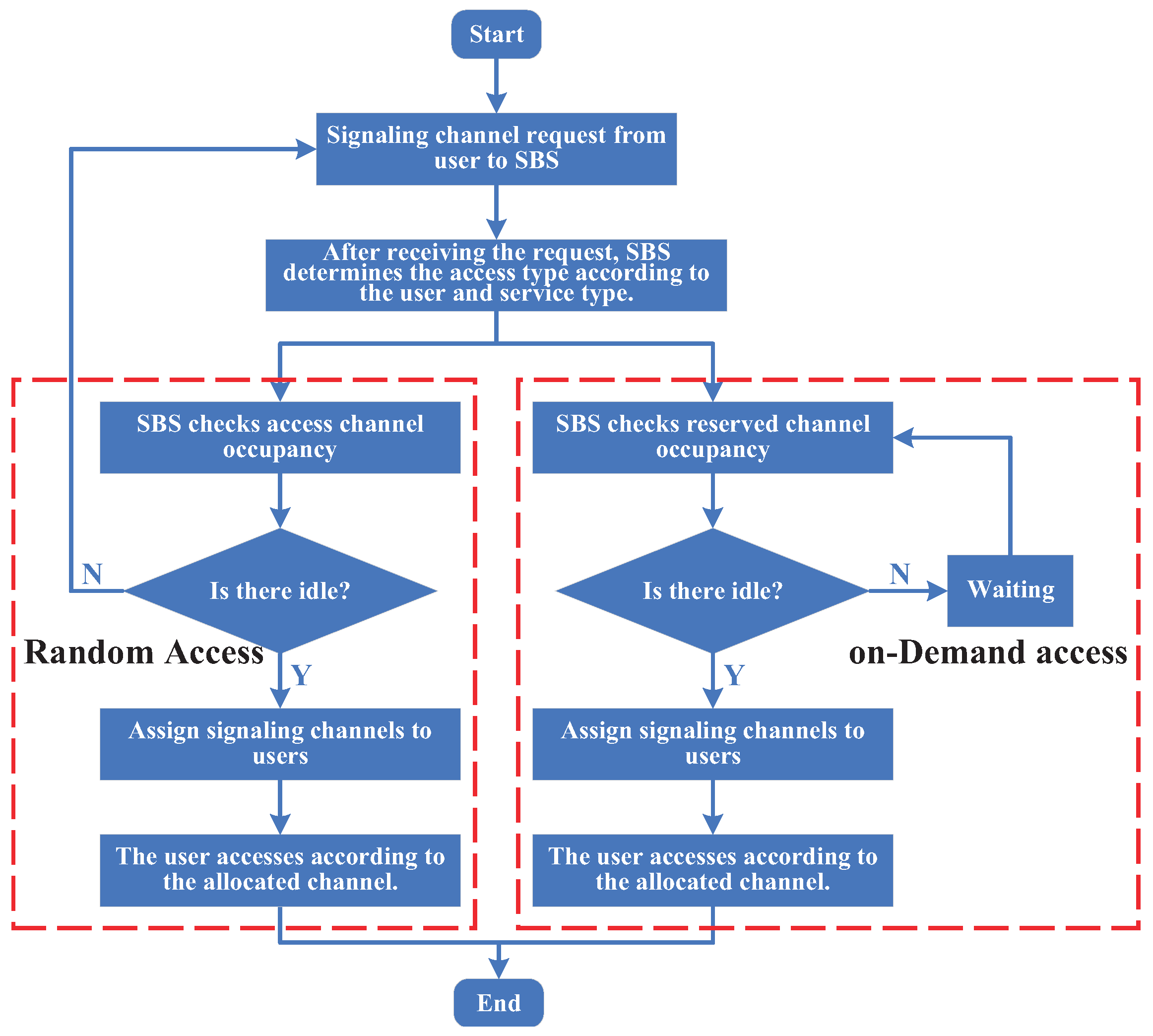
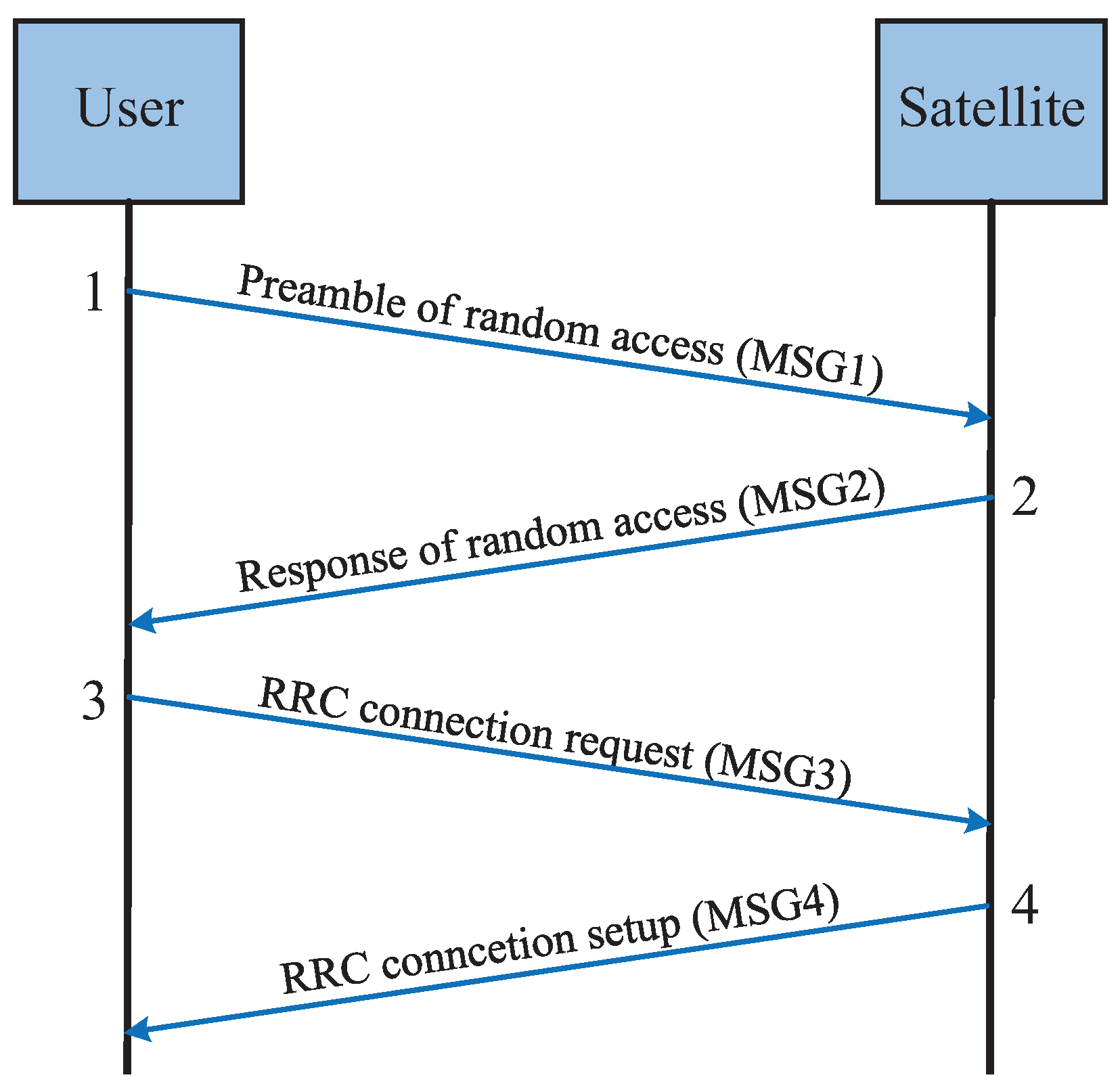
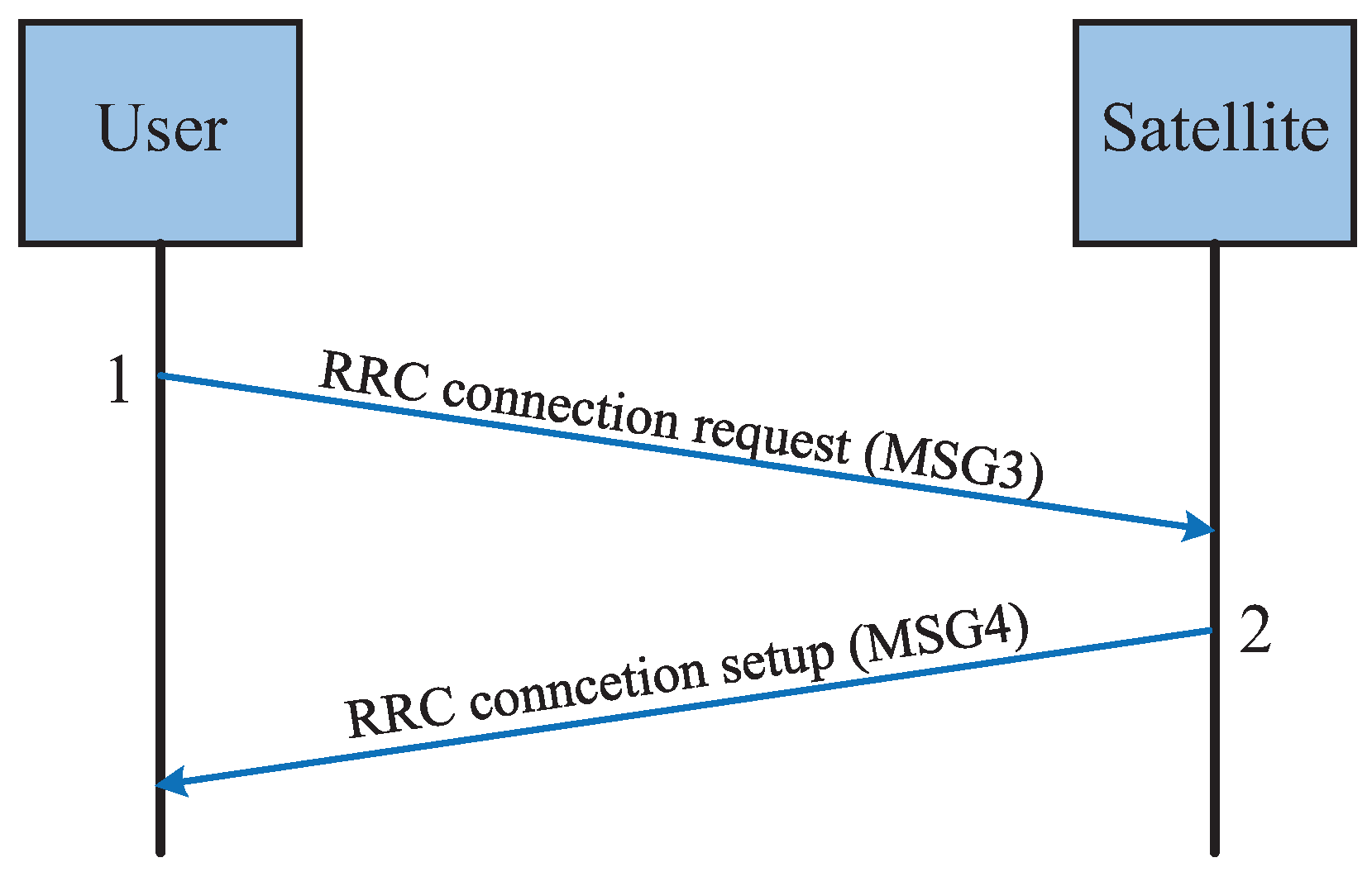
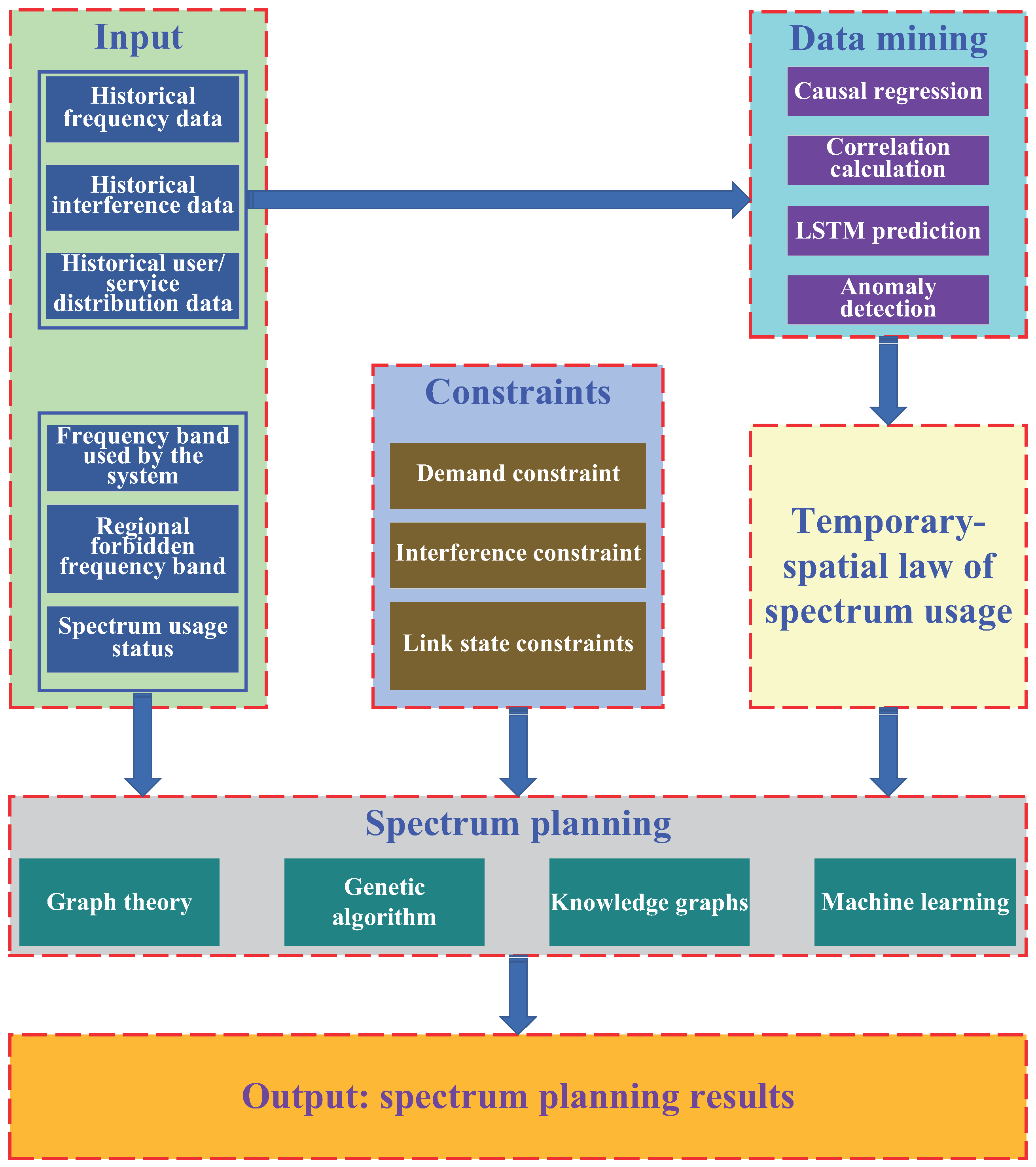
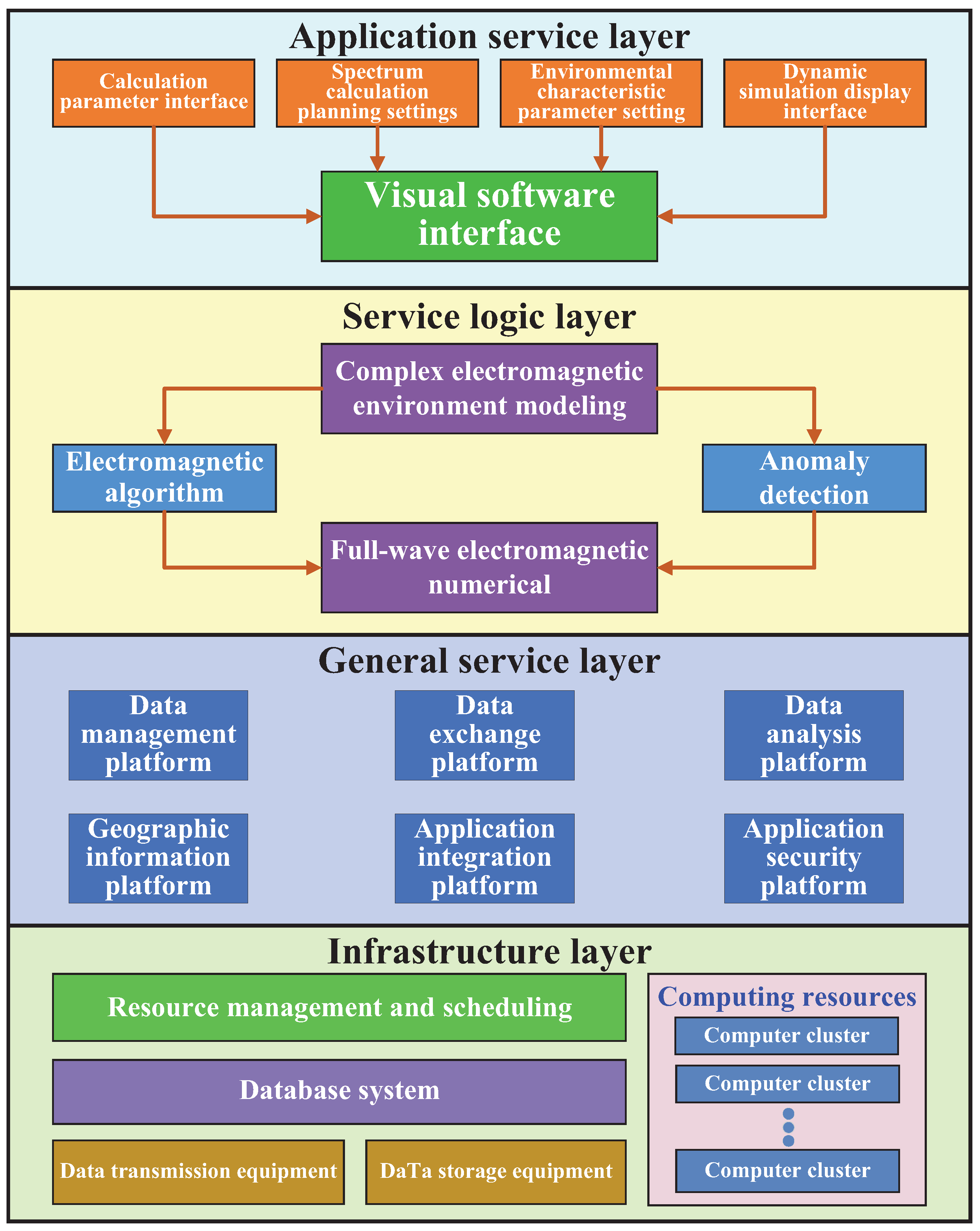

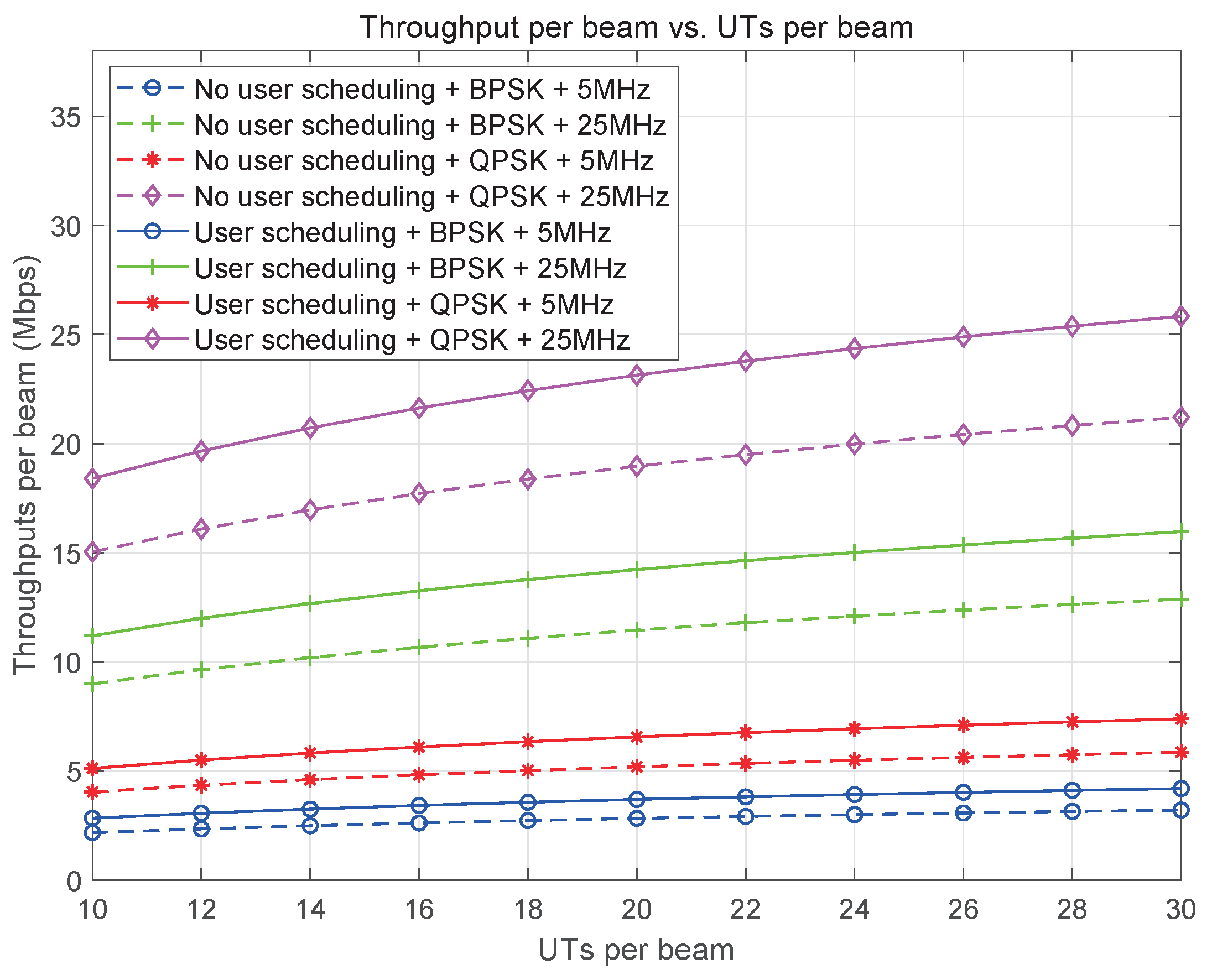
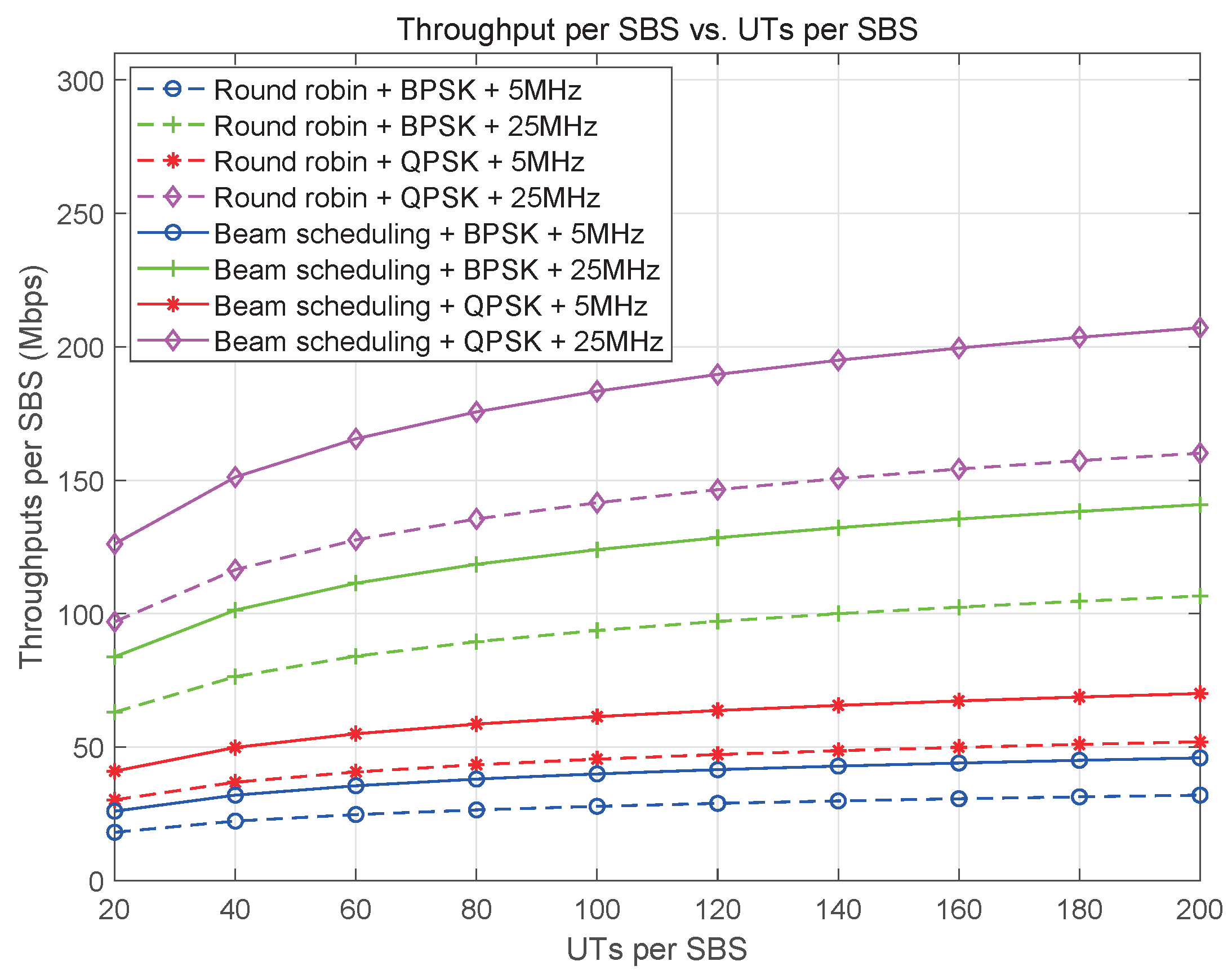
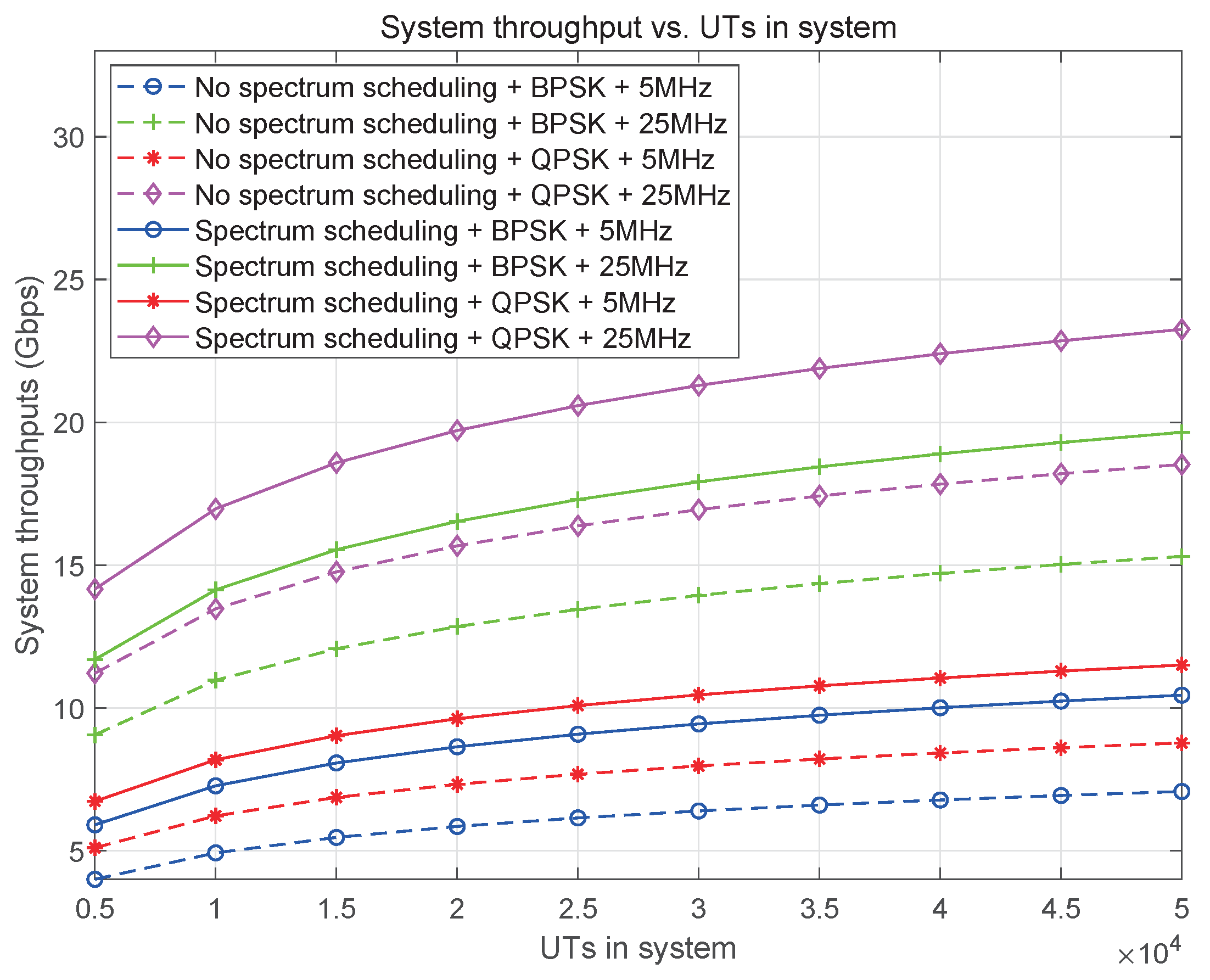
| Reference | Task | Approach | Drawback | Application |
|---|---|---|---|---|
| [5] (2020) | Resource allocation | Lagrange dual method | The approach relies on high-altitude platforms (HAPs) and terrestrial relays (TRs) | Simulated environments |
| [8] (2022) | Resource allocation | EMCL | Not LEO constellation | Simulated environments |
| [13] (2022) | Resource allocation | MDP and DRL | Only uplink transmission in LEO networks with multiband antennas | Simulated environments |
| [15] (2022) | Interference control | Online frequency allocation | Downlink spectrum sharing in a two-satellite system | Simulated environments |
| [17,18,19,20,21] (2018–2022) | 3C resource management | Tapped water-filling algorithm, Nash bargaining game and resource map | The optimization target is throughput without considering other factors | Simulated environments |
| [24,25,26,27,28,29] (2019–2022) | Resource allocation | Q-learning, DRL, and CR | The emphasis is on joint allocation in TSNs | Simulated environments |
| [30,31,32] (2019–2022) | Resource allocation | Contract theory, artificial bee colony algorithm, and iterative algorithm | No consideration of mega-LEO constellation and the optimization target is single | Simulated environments |
| [33,34,35,36] (2021–2024) | Resource allocation | Precoding algorithm and MWC | The focus is on beam-hopping scheduling | Simulated environments |
| [37] (2021) | Resource allocation | Traffic prediction (TP) and resource matching (RM) | Only consider the regional scenario | Simulated environments |
| [38] (2023) | Resource allocation | Lyapunov optimization and successive convex approximation | Focus on satellite–air communications | Simulated environments |
| [39] (2023) | Resource allocation | Distributed algorithm | Only considers the downlink | Simulated environments |
| [40] (2023) | Resource allocation | Multi-agent multi-armed bandit | Two-way transmission in satellite communication systems may be infeasible sometimes | Simulated environments |
| [41] (2023) | Resource allocation | RL | Focus on mobility management | Simulated environments |
| [42] (2024) | Resource allocation | Breadth-first search (BFS) | Focus on edge computation and computation offloading | Simulated environments |
| [43] (2023) | Resource allocation | ML | Focus on artificial intelligence for satellite communication | Analysis |
| [44] (2024) | Network control | Design | Focus on the control of LEO giant constellations | Simulated environments |
| The First Level | The Second Level | The Third Level |
|---|---|---|
| Coverage | Coverage rate | Coverage rate of single satellite |
| Coverage rate of double satellites | ||
| Coverage rate of multiple satellites | ||
| Outage performance | Maximum outage time | |
| Average outage time | ||
| Outage probability | ||
| Elevation | Minimum elevation | |
| Average elevation | ||
| Capacity | Capacity of single channel | |
| Capacity of single beam | ||
| Capacity of single satellite | ||
| System capacity | ||
| Congestion probability | ||
| Access and control | Access capacity | |
| Access delay | ||
| Access success probability | ||
| Quality of service | Bit error rate | |
| Transmission rate | ||
| End-to-end delay | ||
| Call drop rate | ||
| Adaptability | Terminal availability | Usability |
| Learnability | ||
| Human–machine interaction | ||
| Response speed | ||
| Stability | ||
| Security | ||
| Reliability | Degree of connectivity | |
| Redundancy | ||
| Connectivity probability | ||
| Scalability | ||
| Maintainability | ||
| Networking flexibility |
| Parameters | Value |
|---|---|
| Constellation type | Polar walker |
| Number of satellites | 288 |
| Number of beams per satellite | 8 |
| Altitude of LEO satellites | 1025 km |
| Speed of satellites | 7.447 km/s |
| LEO satellite 3 dB beamwidth | 3° |
| LEO satellite coverage radius | 1189 km |
| LEO beam coverage radius | 53.8 km |
| Number of user terminals | 10,000 |
| User distribution | Random |
| Mean value of Poisson arrival for service | 0.3 |
| Interval of beam-hopping | 200 ms |
| Cycle of beam-hopping | 10 s |
| Maximum total power of LEO satellites | 1000 W |
| Maximum power on each subchannel of LEO satellites | 40 W |
| LEO satellite antenna | 20 dB |
| Terminal antenna | 20 dB |
| Noise power spectral density | −173 dBm/Hz |
| Average radius of hot-spot regions | 10 km |
| Carrier frequency of Ka band | 30 GHz |
| Bandwidth | 5/25 MHz |
| Coding | Turbo |
| Modulation | BPSK/QPSK |
| Packet size | 1024 bits |
Disclaimer/Publisher’s Note: The statements, opinions and data contained in all publications are solely those of the individual author(s) and contributor(s) and not of MDPI and/or the editor(s). MDPI and/or the editor(s) disclaim responsibility for any injury to people or property resulting from any ideas, methods, instructions or products referred to in the content. |
© 2025 by the authors. Licensee MDPI, Basel, Switzerland. This article is an open access article distributed under the terms and conditions of the Creative Commons Attribution (CC BY) license (https://creativecommons.org/licenses/by/4.0/).
Share and Cite
Gou, L.; Bian, D.; Nie, Y.; Zhang, G.; Zhou, H.; Shi, Y.; Zhang, L. Hierarchical Resource Management for Mega-LEO Satellite Constellation. Sensors 2025, 25, 902. https://doi.org/10.3390/s25030902
Gou L, Bian D, Nie Y, Zhang G, Zhou H, Shi Y, Zhang L. Hierarchical Resource Management for Mega-LEO Satellite Constellation. Sensors. 2025; 25(3):902. https://doi.org/10.3390/s25030902
Chicago/Turabian StyleGou, Liang, Dongming Bian, Yulei Nie, Gengxin Zhang, Hongwei Zhou, Yulin Shi, and Lei Zhang. 2025. "Hierarchical Resource Management for Mega-LEO Satellite Constellation" Sensors 25, no. 3: 902. https://doi.org/10.3390/s25030902
APA StyleGou, L., Bian, D., Nie, Y., Zhang, G., Zhou, H., Shi, Y., & Zhang, L. (2025). Hierarchical Resource Management for Mega-LEO Satellite Constellation. Sensors, 25(3), 902. https://doi.org/10.3390/s25030902






